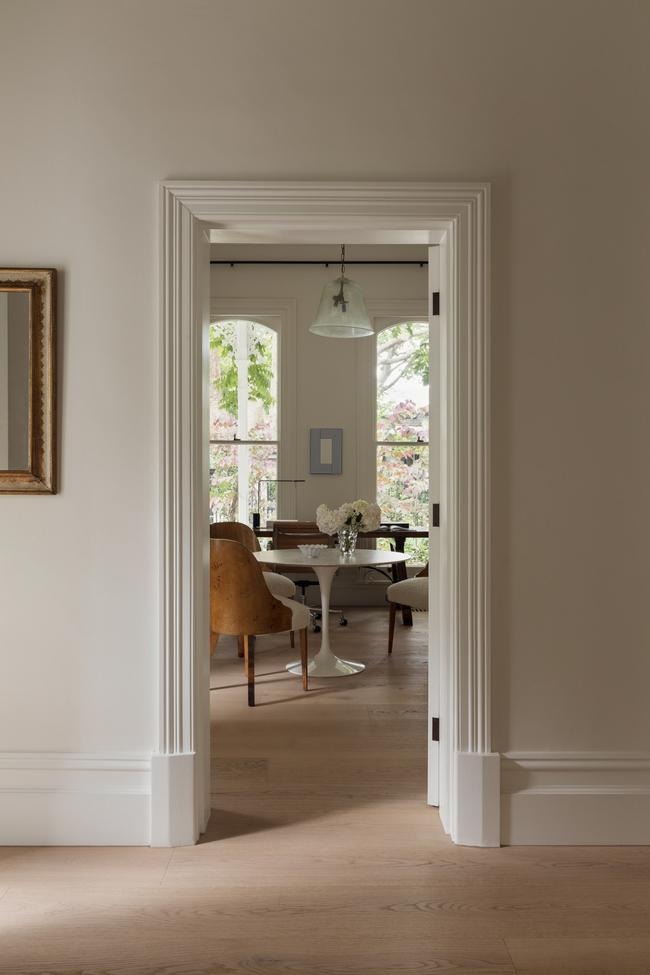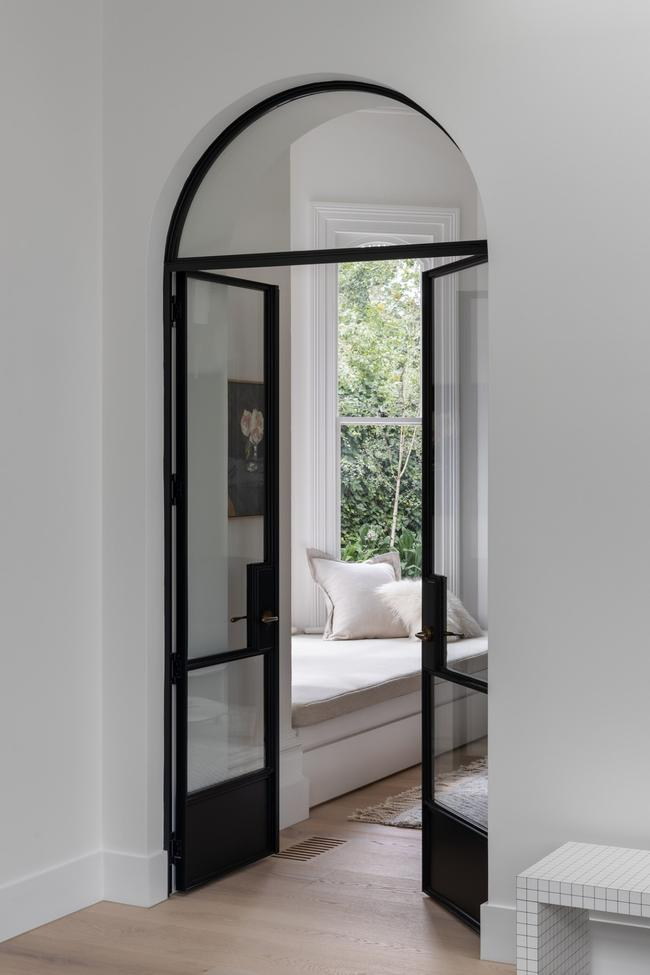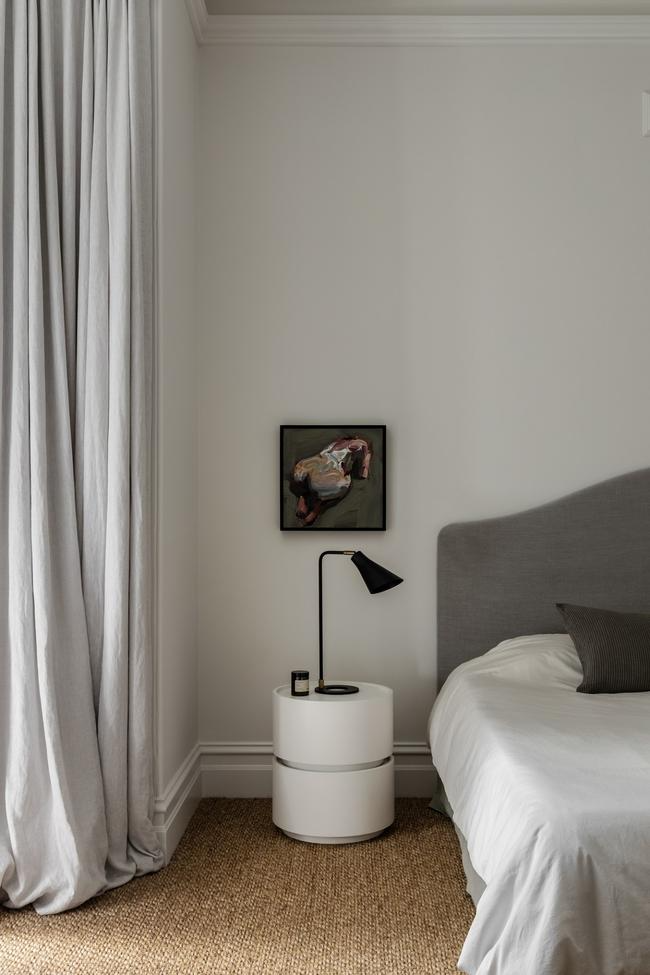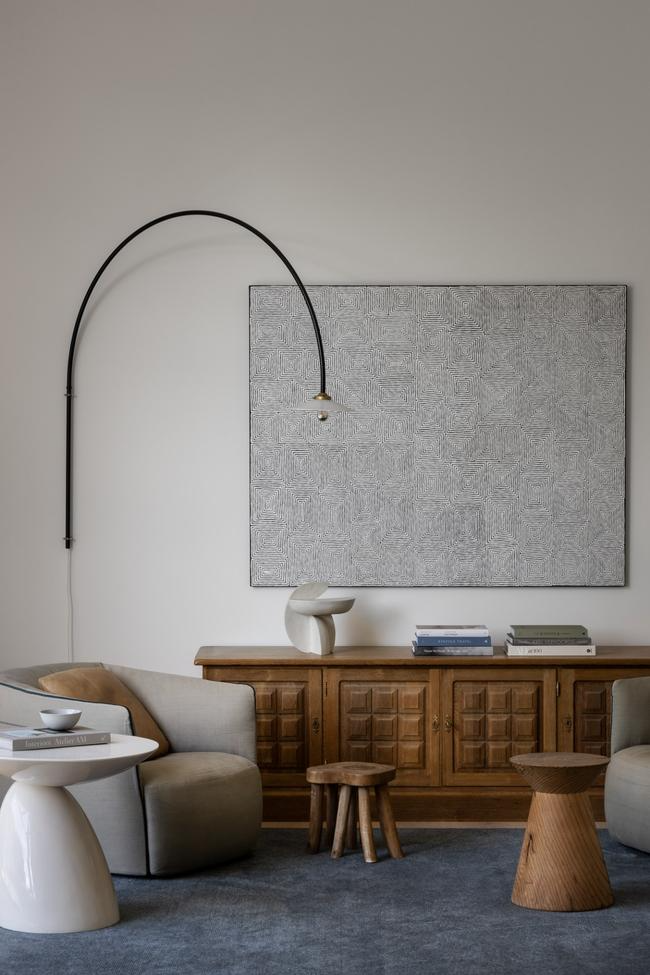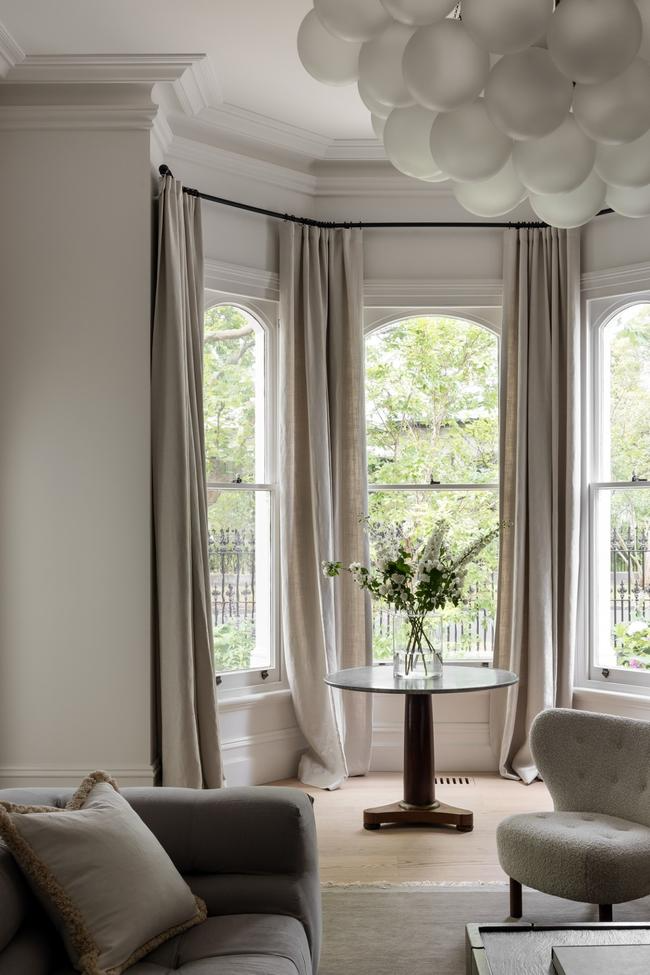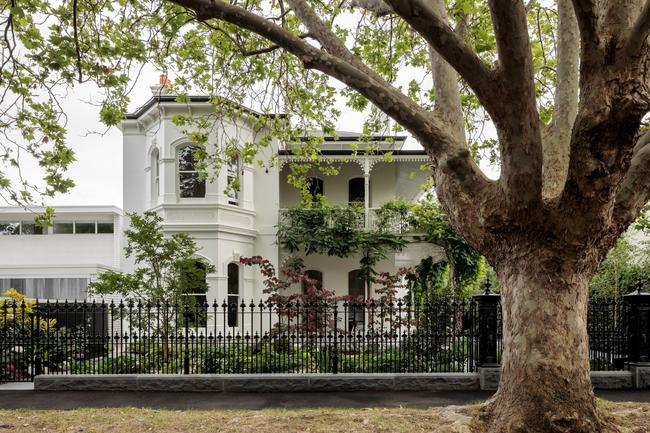
In modern speak ‘classic’ attaches to so much average stuff that its meaning of ‘time-tested excellence’ has snuffed. But when interior designer Ali Ross and her husband Ben found their future home down a leafy cul-de-sac in Melbourne’s south-east, ‘classic’ was the only chronicle of its century-plus status, imperious late-Victorian structure, and ornate featurism; one tilting towards the florid Italianate end of the era.
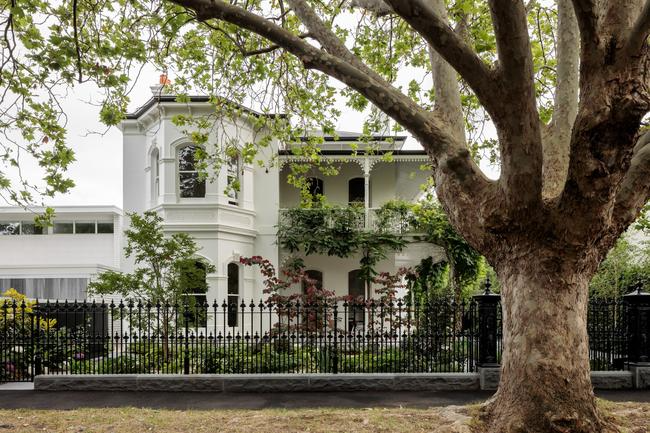
In modern speak ‘classic’ attaches to so much average stuff that its meaning of ‘time-tested excellence’ has snuffed. But when interior designer Ali Ross and her husband Ben found their future home down a leafy cul-de-sac in Melbourne’s south-east, ‘classic’ was the only chronicle of its century-plus status, imperious late-Victorian structure, and ornate featurism; one tilting towards the florid Italianate end of the era.
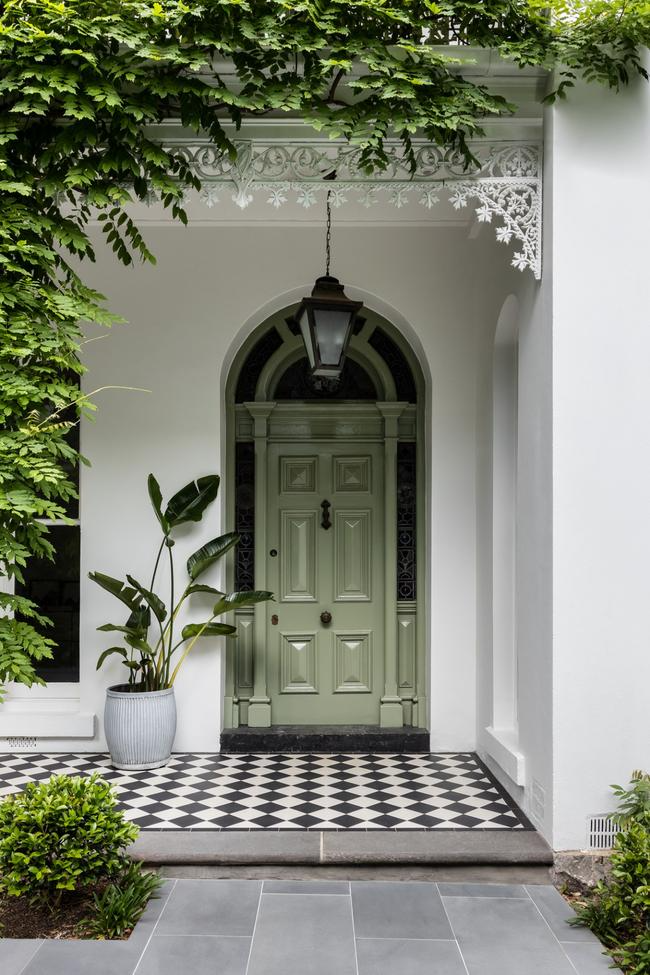
The couple instantly committed to renewing the significant 1890s property—converted into three flats by noted architects Walter and Richard Butler in 1919 and restored back to a single house in the 1970s—regardless of the strict heritage overlay determining its design outcomes.
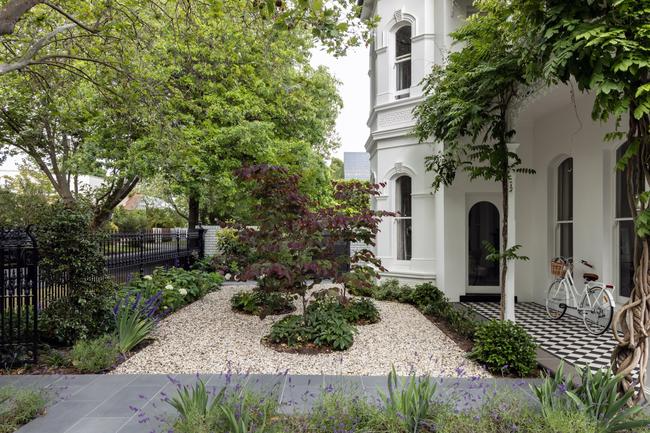
Such prescriptive guidelines might have given the arch modernists their leave, concedes Ross, but the scale and palpable “soul” of the home—“loved by the same family for decades”—augured good times for a small brood counting sons Jasper, Felix, and the Groodle, Sadie.
“The rooms were immensely proportioned but the footprint was relatively compact which appealed to me instantly,” recalls Ross of the stage-managed reach to formal spaces through an arched entrance door edged in jewel-coloured stained glass found repeating in a like-shaped window at the top of the foyer stair. “My vision was very clear from the beginning.

Ross translated that foresight into a fully resolved design with the aid of her sister-in-law Katherine Stewart of Page Stewart Architects who, collaborative in the architectural detail, helped gain planning permission within five months of property purchase. The build was undertaken by Codbuild. “You could call it a carte blanche brief,” says Ross of pandering to her own whims, the will of boys—“who informed the garage and pool house”—and the heritage wants of local council. But top of the refurb list were the replacement of roof, the removal of a gormless green aluminium front fence, a re-design of the landscape (by Ross with Sophie McLean), and a reconfiguration of first floor bedrooms to fit robes and ensuites.
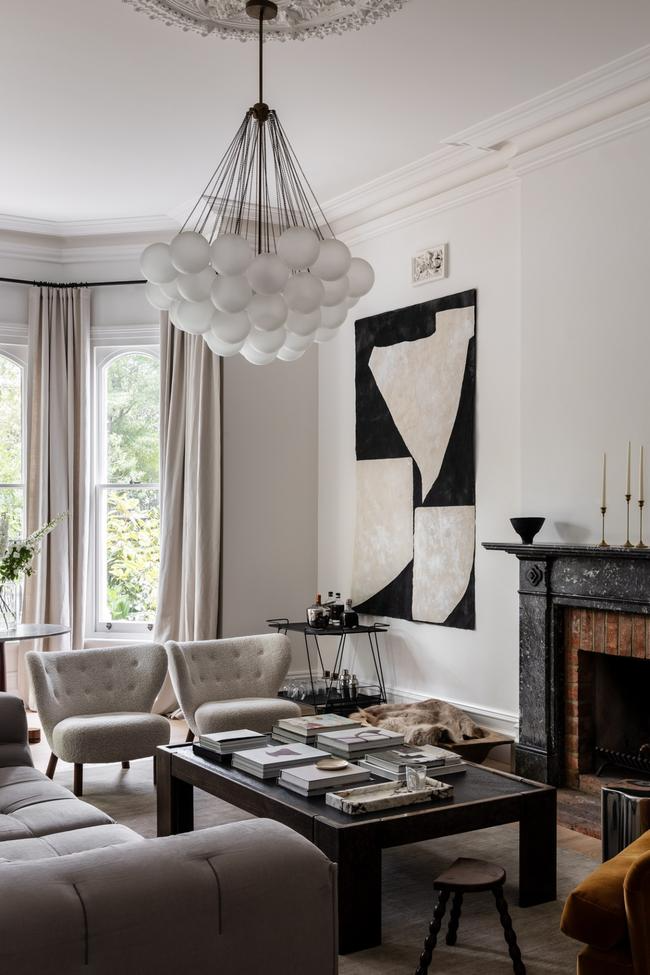
The wet areas became exercises in reductive luxury, with slabs of Carrara marble in the ensuite and Elba in the main bathroom, alluding to Victorian materiality but with a featureless monumentality that says 21st century minimalism. Ross inserted floor-to-ceiling slot window into shower recess for the wake-up and wind-down to nature; a grounding glimpse that repeats downstairs in steel-framed arched glass doorways that deliver light and garden drama beyond one space.
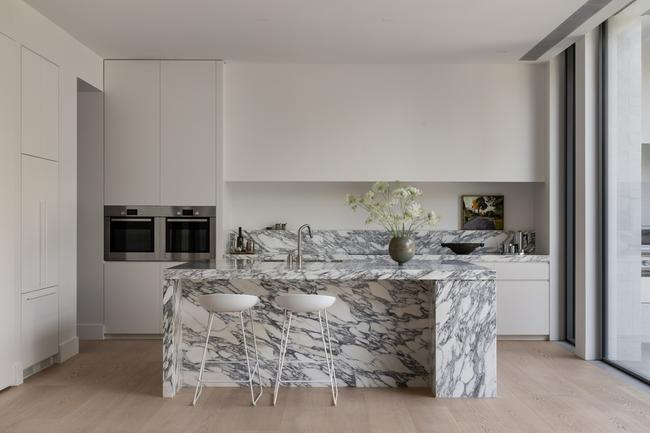
“The main bathroom was also enlarged and now looks out to a full width north-facing terrace, that was built over the ground floor addition,” she says of a new open-plan kitchen, dining and living zone which, replacing its faded ’70s precedent, runs the full width of house and ripples down an outer amphitheatre-style step into lush garden and pool.

Outer foliage is the sole concession to colour in a house that anchors an airy mix of white fine art and furnishings (from 19th century Louis Phillipe to the best of 1960s Belgium) with primitive timber pieces—two treasured stools travelling as hand luggage from Amsterdam via London 10 years ago.
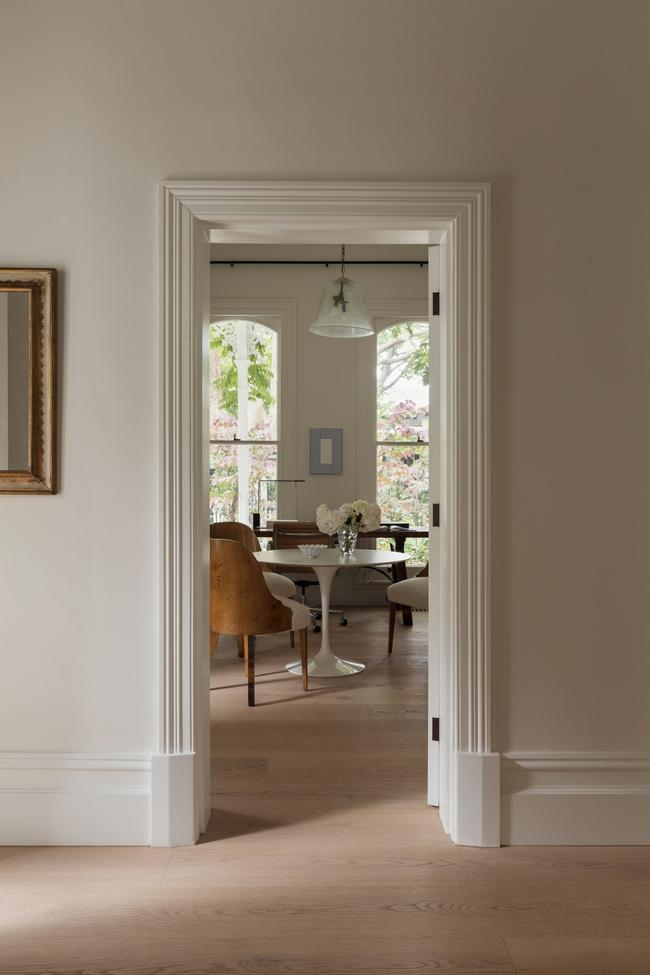
The quiet, textured hybridity speaks of Ross’s design heroes, architects John Pawson and Rose Uniacke, her past employers Nexus Designs and Burley Katon Halliday and former residencies in Denmark, Japan, America and the United Kingdom, between which simple things travelled best. It circles discussion back to ‘classic’ and how Ross’s foundational play of certain proportions, object placements, light and lasting materials manifest a calmness. “There is a simplicity to my work,” she says in nod to ‘noble’ humility. “I like to think that my projects will always stand the test of time.”
